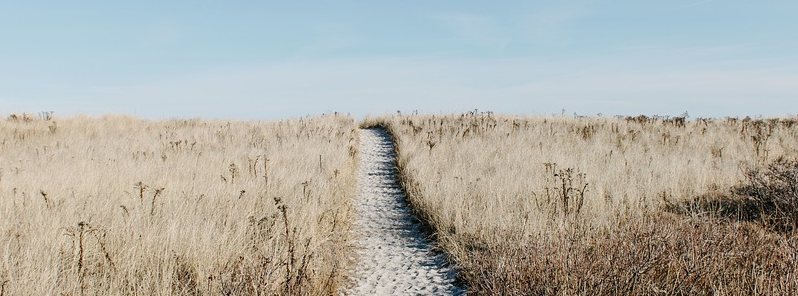Northern California under water shortage emergency, farmers warn water is unnecessarily let out to sea

Nearly two million people in Northern California have been placed under a water shortage emergency on Wednesday, June 9, 2021, as a severe drought continues to worsen in much of the western U.S. Mandatory water restrictions have been issued for Santa Clara County, while almost 17 million endangered salmon are being transported to the sea as rivers are drying up. Meanwhile, Lake Mead, the reservoir created by the Hoover Dam on the Nevada-Arizona border and the largest in the U.S., has reached historically low levels as the water dropped to 326.61 m (1 071.57 feet) above sea level. Meanwhile, farmers are warning that water from reservoirs is unnecessarily being let out to sea.
Much of the western U.S. has been suffering from severe drought, extreme heat, and fire risk this year, with Northern California already declaring a water shortage emergency on Wednesday.
"Santa Clara County is in extreme drought. We can’t afford to wait to act as our water supplies are being threatened locally and across California," said Tony Estremera, director of the Santa Clara Valley Water District, in a news release.
"We are in an emergency and Valley Water must do everything we can to protect our groundwater resources and ensure we can provide safe, clean water to Santa Clara County residents and businesses."
"Increased conservation is also necessary to protect local water supplies and guard against groundwater overdraft, subsidence, and dry domestic wells, especially if the drought extends into next year."
Under the declaration, almost two million Northern California residents are being asked to reduce their water usage by 15 percent as compared to 2019. People are also advised to limit watering their lawns and filling their pools.
"These actions are necessary as we face further challenges to our local water supply," added Estremera. "We can’t predict how long this drought will last. But we know now is the time for action to protect our groundwater basins and make sure there is enough water for all our communities."
According to the U.S. Drought Monitor, the entire state of California is currently facing a dry spell, with intensity levels ranging from moderate to exceptional throughout the state.
Baby Chinook salmon from California’s Central Valley are also being transported to the ocean as a step to keep them from suffering in a year of drought for the region.
"The California department of fish and wildlife is utilizing lessons learned from the past 15 or more years of salmon releases and the last drought to maximize release success," said Jason Julienne, north-central region hatchery supervisor.
"Trucking young salmon to downstream release sites has proven to be one of the best ways to increase survival to the ocean during dry conditions."
Meanwhile, Lake Mead, the reservoir created by the Hoover Dam and the largest reservoir in the U.S., has seen historically low water levels as it dipped to 326.61 m (1 071.57 feet) above sea level on Wednesday.
The lake surface has pummeled 42.6 m (140 feet) since 2000, leaving the reservoir just 37 percent full.
With the dramatic drop, officials are expecting to declare an official water shortage for the first time, which could affect water and energy that Lake Mead and the Hoover Dam transport to Arizona, Nevada, and California. Water levels at Lake Mead are expected to keep dipping throughout the year.
What nobody is saying is 'that the state has been letting water out of reservoirs across California for months now,' investigative journalist Katy Grimes reports.
"And it’s not going to farmers, growers, ranchers or urban use. The environmental policy says the water 'flows' from reservoirs are necessary to produce a rebound of endangered Delta smelt and Chinook salmon. However, these policies are a failure as neither species have been collected in all of the latest trawling surveys, where they spend several days a month searching in more than 200 spots.
"This practice of releasing water and hoping fish improve, has been unsuccessful for nearly 30 years, according to Kristi Diener, a California water expert and third-generation Central Valley farmer. Both species are close to extinction."
Diener has been warning steadily that water is unnecessarily being let out to sea as the state faces a normal dry year.
Featured image credit: Pixabay

The people pulling the strings must have watched the Roman Polanski 1974 movie Chinatown with Jack Nicholson and Faye Dunaway. Truth is stranger than fiction in these End Times.
California has been draining the aquifers in places having very few precipitations and using this for very large farms and very rich peoples’s swimming pools
remember – follow the Science.
the Science behind climate change is even worse than COVID. But we won’t learn that for another decade+.
it’s mostly downhill from here!
People deserve it.
Natural selection.
California, Oregon and Washington need to build de-salinization plants along their coastlines. That would solve their water problems. If they already have them, they need to build more of them.
Dry up the Westlands Water District. They exist only to sell almonds to Japan.
So growing food is wrong? Wow.
Your post is the USA is not going to be around much longer.